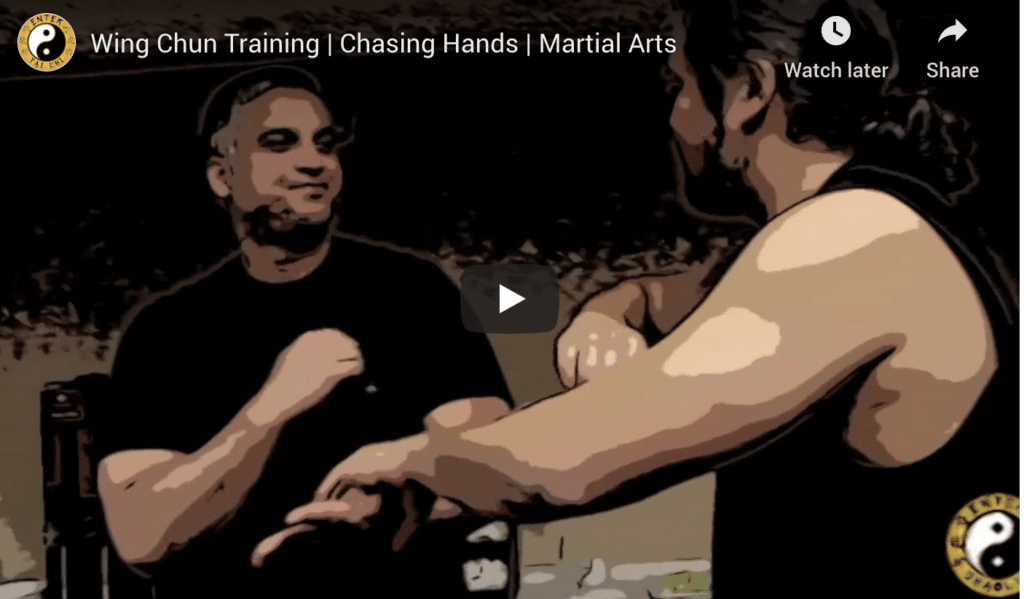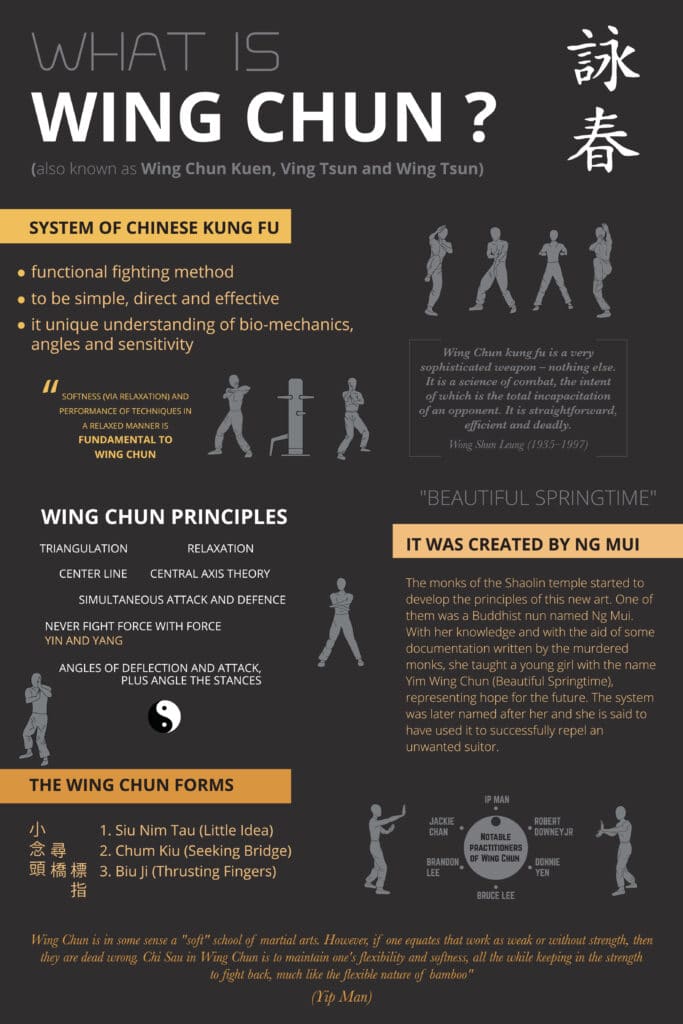
Among the many repeated questions we get here at Enter Shaolin, what is your Wing Chun lineage is one of the top ones. Many people want to know what Sifu Phu Ngo’s Wing Chun lineage is…
Many cannot figure it out and that is partly because Sifu Phu has made his Wing Chun his own and partly because just as style is irrelevant to us, so is lineage. Means you won’t hear us bragging about who we have trained with, etc.
See here at Enter Shaolin we are not about name-dropping nor are we style snobs. We are about obeying the energy and if the energy and structure are good, then well you go with your awesome self!
We do not care where in the globe you come from, if you are new to martial arts or not, if you trained under someone or not, what styles you have trained in or have not trained in, or if you trained under anyone at all.
It’s not to say that we do not care about you or your training, because we do. We love hearing your experiences, what you’ve learned and where you have trained. We also love hearing about your wants and desires for your Kung Fu Journey.
We are just aware that at the end of the day, neither your style nor your lineage are significant; what is important is whether or not your energy is in the right place. Is your structure correct?
If so, everything is excellent, but if not, it’s okay either way. There is always room for development and progress among us all. 🙂
You have to ask yourself… Do you like what you do and is what you do working for you? If so, then it’s all good!
In the end, your Wing Chun and your Kung Fu will become your own. That’s why even in the Ip Man lineage, each of his direct Wing Chun Sifu(s) have their ways of doing things and have visual differences.
So for those wondering why we do not go around branding ourselves as XYZ lineage of Wing Chun, etc…
Does Wing Chun Lineage Matter?
Wing Chun is one of the oldest and most popular styles of Kung Fu. It is a system of self-defense that uses physical and mental tactics to defeat an opponent.
Wing Chun was created in Southern China around the turn of the twentieth century by a man named Lee San Gi. There are several different wing chun lineages, each with its own unique style.
Wing Chun is a very martial art that focuses on efficiency. The Wing Chun practitioner has mastered the knowledge of applying maximum force with minimum effort and expenditure of energy.
The Wing Chun practitioner telegraphs his opponent’s intentions and position through body language, a study of the opponent’s actions and movements.
Wing Chun is a very dynamic system where movement and force are used to exploit weaknesses in an opponent’s defense. The Wing Chun system is based on the idea that the center of balance is at the hip.
The hips are unified and connected to the waist, while they are also free to move in all directions. Wing Chun practitioners are trained to move their bodies in a way that keeps the center of balance at the hips.
They are also taught to maintain normal breathing and awareness, (not hyperventilating) while moving. Wing Chun practitioners must be able to move and use their entire body at the same time.
Wing Chun focuses on the manipulation and use of the hands, feet, elbows, and knees in combat. All of these parts are used together to defeat an opponent who is attempting to attack.
Wing Chun techniques focus on their opponent’s body joints in order to manipulate them. This type of movement is similar to the flow of water.
Water is constantly flowing around and through the hands in a very natural way.
The rest of our Wing Chun lineage story:

Sifu Phu Ngo first started his Wing Chun training under William Cheung’s system as well as completed it. Around this time his best friend traveled to China and studied under the Ip Man lineage for almost 10 years. When his buddy came back to the States, he shared what he had learned with Phu, who then implemented much of what his friend learned into his Wing Chun.
As the years progressed, Sifu Phu Ngo implemented more of what his grandfather taught him and also what he learned from Tai Chi into his Wing Chun.
He has applied the principle that Bruce Lee taught of taking what is good and works for you and discarding the rest, making his Wing Chun truly his own.
So in short Enter Shaolin’s Wing Chun is Ngo Dac Na Wing Chun. It’s also why we can not be pinpointed to one system or another or why we do not claim to be specific lineage. Sifu Phu has taken what works and discarded the rest creating his own unique version of Wing Chun.
Sifu Phu Ngo gives a great example of as long as the energy and structure is balanced it will work for you by showing that the different types of Tai Chi and their similar moves while different are balanced. He also shares there are many combinations of two numbers added together to equal 10, and if your end goal is the number 10, the two numbers you use to get there do not matter as long as they equal 10.
The same can be said for any Martial Arts including Wing Chun, there are many ways to accomplish the same thing as long as your energy and structure are correct, does it matter if it is 8+2 or 7+3, etc.? Of course not! It’s about doing what works for you and making your Wing Chun, literally your Wing Chun. Make it your own, just like Sifu Phu made, his own. 😉
Learn more about Sifu Phu’s Wing Chun lineage and philosophy here in our latest Sifu’s Corner video:
And that my folks, is how we got our Wing Chun. It’s uniquely ours and hopefully you are making yours uniquely you.
Chime in, in the comments below and let us know your thoughts on this post and video, we love hearing from you!
Blessings & Happy Training,
Jamie Pelaez
& The Enter Shaolin Family
P.S. Speaking of Wing Chun, you can sign up for this month’s free webinar The Complete Sil Lum Tao Breakdown Part 6, by clicking here.


Hi there i just about the wing chun. I Can understand how not saying names about the style of Martial arts or the Lineage may become a Issue to most people .On the other hand I feel thatLineage is important it tells you the history and why it was developed as a martial art. I just started kung fu I am learning ,hang ling do_won hop kuen do ,kajukenbo and southern style shaolin kung fu under Sigung Sanchez an he hasTaught me to be practical in application because if you do it correctly it will save your life.
Sifu is great! At the “end of the day”, it’s really about the individual !
True That!
I’m new to Kung Fu ( I took Karate for a time when I was younger). So I speak reluctantly. But, I would like to say that while I have an enormous amount of respect for masters like Ip Man and would like to learn more about his teaching. It’s important to remember that Ip Man himself was an individual. If he had not made Wing Chun his own, he would not have made such an impact.
That’s so true. The principles behind the techniques is what matters most. How they are expressed comes from personal experience which is why at the end of the day everyones martial art is their own.
Where does Sifu Pho NGO teach?
Hey Jed, we are located in New Jersey.
Best way from abroad in a systematic manner from basics and progress from there on